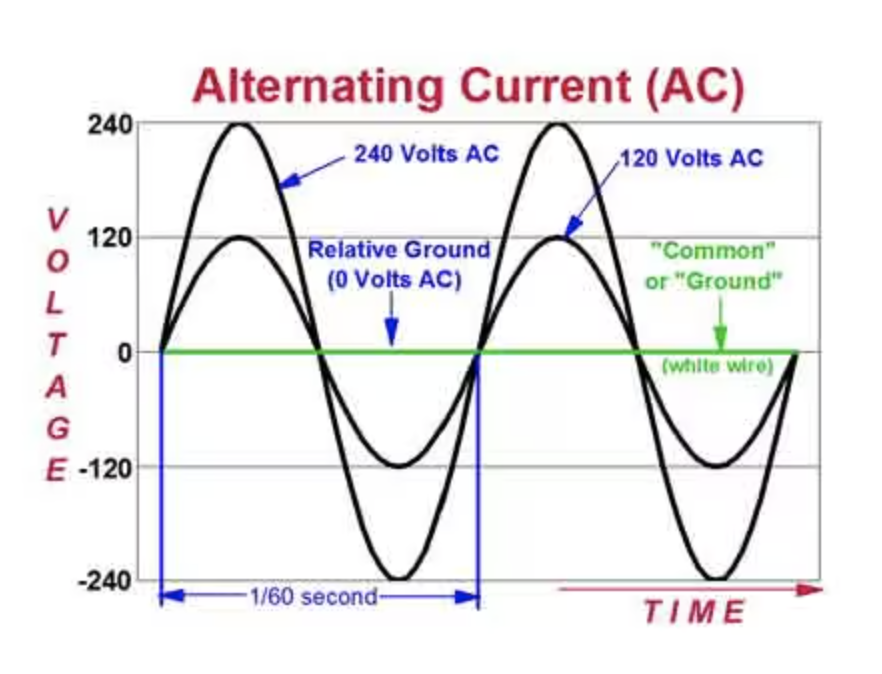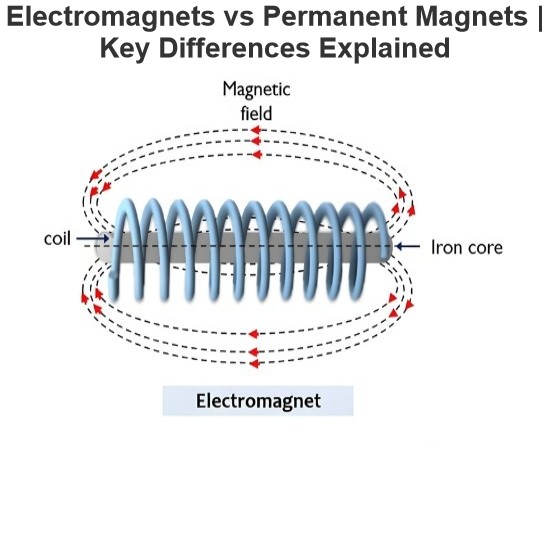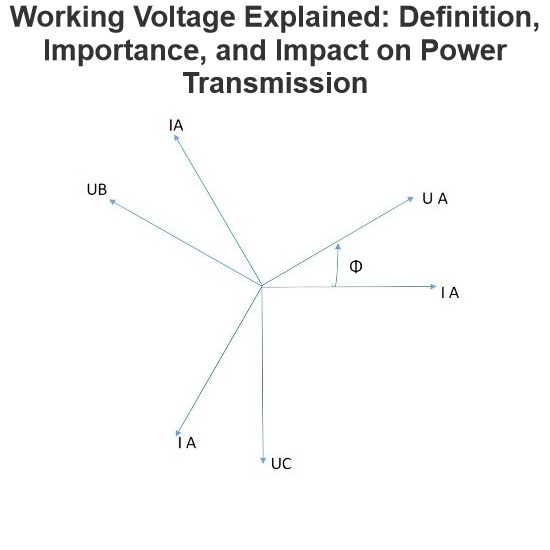Ano ang Alternating Current?
Ang alternating current (AC) usa ka pundamental nga aspeto sa mga sistema sa elektrisidad nga nag-uli sa atong kalibutan sa daghang paagi. Ang kapabilidad niini nga sayon nga gipang-generate, giconvert sa uban pang mga voltaje, ug gitransmit sa dako nga distansya mihimo kini ang gipili nga opsyon alang sa pagtransmit ug distribusyon sa kuryente. Padayon pa, ang daghang abilidad sa AC sama sa kompatibilidad sa uban pang mga device ug safety features mihimo kini importante sa atong pangadag-um nga kinabuhi.

Sa mundo sa elektrisidad, adunay duha ka primary nga form sa electric current: ang alternating current (AC) ug direct current (DC). Ang pagkamahimo sa pagkakaiba sa matang sa kuryente ug ang ilang aplikasyon sa pangadag-um nga kinabuhi mahimong makatabang sa pag-appreciate sa mga advances sa electrical engineering ug teknolohiya nga nasa atong palibot.
Ang alternating current (AC) ug direct current (DC) duha ka distinct nga paagi sa pagsalin sa electric charge sa circuit. Ang AC involbar sa pag-flow sa charge nga periodic nga mobalik sa direksyon, nagbuhat og waveform nga kasagaran naa sa sine wave. Sa uban pa, ang DC refer sa pag-flow sa charge sa single, constant nga direksyon. Ang pagkakaiba sa ilang nature, functionality, ug aplikasyon magbuhat og contrasting landscape sa electrical power.
Usa ka key rason kung unsaon ang AC gipili kaysa sa DC mao ang iyang kapabilidad nga sayon nga iconvert sa high voltages, mas efektibo ang pag-transmit sa kuryente sa dako nga distansya. Gisama, ang transformers mahimo mapataas o mapababa ang AC voltage, resulta sa minimal nga power loss sa long-distance transmission. Sa kabalaka, ang DC power dili sayon nga maalter, gibag-o kini para sa pag-transmit sa dako nga distansya.
Ang working principle sa AC centered sa changing magnetic field gipang-generate sa flow sa electric current. Kon ang current mobalik sa direksyon, ang magnetic field usab mobalik, inducing a voltage sa nearby conductors. Kini nga property sa AC fundamental sa pag-operate sa AC generators ug transformers.
Ang invention sa AC mahimong giatributo sa daghang mga tawo, pero ang Serbian-American inventor, Nikola Tesla, kasagaran gicredit sa pagpioneer sa AC systems. Ang trabaho ni Tesla sa AC power transmission ug ang iyang pag-develop sa induction motor nihatag ug tabang sa pag-establish sa AC isip dominant nga form sa electricity.
Sa frequency, ang terms 50-cycle ug 60-cycle alternating current refer sa number of times ang current mobalik sa direksyon sa usa ka segundo. Ang frequency sa AC power nagbago-bago sa globe, ang 50 Hz standard sa daghang bahin sa Europe, Asia, ug Africa, samantalang ang 60 Hz standard sa North America. Kini nga pagkakaiba sa frequency mahimong makaapekto sa operation sa certain appliances ug devices, important ang paggamit sa appropriate frequency para sa intended purpose.
Ang advantages sa AC kaysa sa DC extend beyond efficient power transmission. Ang AC easier to generate ug widely used para sa electric power generation, making it more accessible ug cost-effective. Moreover, ang AC systems safer tungod kay sila easy to switch off kon required, reducing the risk sa electrical accidents. Ang AC versatile ug can power various devices, from small household appliances to large industrial machines.
Ang generation ug transmission sa AC crucial components sa electrical power infrastructure. Ang AC generated through various means, such as hydroelectric, thermal, ug nuclear power plants, which use generators to convert mechanical energy into electrical energy. Once generated, ang AC transmitted through power lines consisting of transformers, transmission towers, ug substations that adjust the voltage levels for efficient distribution ug usage.
Ang alternating current plays a vital role in our daily lives, as it powers most of the appliances ug devices we rely on, including lights, computers, ug household appliances. In addition, its compatibility with transformers, ease of generation, ug ability to transmit power over long distances make it a cornerstone of modern electrical systems.
Frequency has a notable impact on AC usage. In addition to determining the compatibility of devices with a region's power supply, the frequency of AC power affects electrical motors' speed ug performance. A change in frequency may result in the motor operating at a different speed or, in some cases, malfunctioning.
Transformers are essential devices in AC systems, as they adjust voltage levels to meet the requirements of various applications. They function by utilizing the principle of electromagnetic induction, with the changing magnetic field in the primary coil inducing a voltage in the secondary coil. By altering the number of turns in the coils, transformers can efficiently increase or decrease the voltage of AC power, depending on the application's specific needs.
The differences between alternating current and direct current are crucial in understanding the diverse landscape of electrical power. The invention of AC by Nikola Tesla and other inventors has revolutionized how we generate, transmit, and use electricity. With an appreciation for the characteristics and applications of alternating current, we can better understand the technology and infrastructure that powers our world.
Pwede ba mapahibaloan kung unsaon ang Alternating Current Works?
Ang alternating current (AC) works by periodically changing the direction of the flow sa electric charge within a circuit. In contrast sa direct current (DC), which flows in a constant direction, ang AC oscillates back and forth. This oscillation is typically represented as a waveform, often in the shape of a sine wave. Let's dive deeper into how alternating current works.
Generation: Ang AC generated using a rotating magnetic field to induce an electric current in a conductor. This is done using devices such as generators and alternators, which convert mechanical energy into electrical energy. In these devices, a coil of wire rotates within a magnetic field, or a magnet rotates around a stationary coil. This rotation causes the magnetic field to interact with the conductor, inducing a voltage and, consequently, an electric current that changes direction periodically.
Waveform: The alternating nature of AC is depicted by a waveform, which shows the voltage or current as a function of time. The most common waveform for AC is the sine wave, which can also take other forms, such as square or triangular waves. The waveform's shape determines the characteristics of the AC and how it interacts with various electrical components.
Frequency: One important parameter of AC is its frequency, which indicates the number of complete cycles the current undergoes per second. It is measured in hertz (Hz). Common frequencies include 50 Hz and 60 Hz, but other frequencies can also be used depending on the application. The frequency of the AC affects the performance and compatibility of devices and equipment connected to the power supply.
Voltage and current relationship: In an AC circuit, the voltage and current can be in phase (i.e., they reach their peak values simultaneously) or out of phase (i.e., they reach their peak values at different times). The phase relationship between voltage and current in an AC circuit can significantly impact the power delivery and the system's efficiency.
Transformers: A key advantage of AC is that its voltage can be easily changed using transformers. Transformers work on the principle of electromagnetic induction, with a changing magnetic field in the primary coil inducing a voltage in the secondary coil. By adjusting the number of turns in the coils, the transformer can step up or down the AC voltage as needed. This ability to adjust voltage levels makes AC suitable for efficient long-distance power transmission.
Ano ang formula aron mapasuod ang alternating current?
To calculate the value of alternating current (AC) at any given time, you need to know the current's amplitude (maximum value) and the angular frequency. The general formula for calculating instantaneous current in an AC circuit is:
i(t) = I_max * sin(ωt + φ)
Where:
i(t) is the instantaneous current at time t
I_max is the amplitude or peak current
ω (omega) is the angular frequency, calculated as 2πf (where f is the frequency in hertz)
t is the time at which you want to calculate the current
φ (phi) is the phase angle, which accounts for any phase shift between the voltage and the current waveforms
Remember that this formula assumes a sinusoidal waveform, the most common form of AC. If the waveform is not sinusoidal, the formula will be different and depend on the specific shape of the waveform.
Another important value for AC circuits is the root-mean-square (RMS) current, which measures the effective current. The RMS current is useful for calculating power in AC circuits and can be compared to the steady current value in DC circuits. The formula to calculate RMS current from the peak current is as follows:
I_RMS = I_max / √2
Where:
I_RMS is the root-mean-square current
I_max is the amplitude or peak current
√2 is the square root of 2, approximately 1.414
Using these formulas, you can calculate the instantaneous current value for an alternating current waveform and determine the effective or RMS current value.























